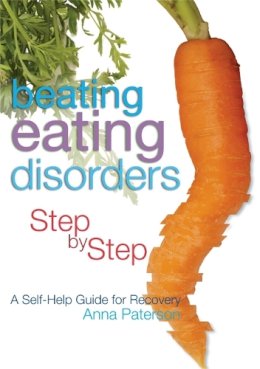
Beating Eating Disorders Step by Step: A Self-Help Guide for Recovery
Anna Paterson
People living with eating disorders find it hard to take the step of choosing recovery, often because the disorder has developed as a way of `coping' with problems or stresses in the their life. This book outlines new and positive ways of dealing with eating disorders for people living with eating disorders and their families.
A practical workbook written by someone who has lived with eating disorder, it provides advice and strategies to aid understanding and to help the reader to gain control of their illness. Anna Paterson leads the reader through easy-to-use therapeutic exercises, such as describing the pros and cons of an illness, writing a farewell letter to it, and using role-reversal scenarios to get a new perspective on their attitude to eating. She emphasizes the importance of taking things at your own pace and in the final section of the book provides a set of diet plans specifically designed for anorexics, bulimics and compulsive overeaters.
This book will be valued by people living with eating disorders and their families, and also the psychologists and psychotherapists, counsellors, health professionals and social workers who work with them.
Product Details
About Anna Paterson
Reviews for Beating Eating Disorders Step by Step: A Self-Help Guide for Recovery
Children and Young People Now Although aimed squarely at sufferers, Beating Eating Disorders might well also serve to provide information and insight to their carers, family and friends. In short, anyone looking for a handy, non-specialist resource for steps towards eating disorder recovery is likely to find much of interest here.
Cornwall Eating Disorder Association This book is extremely practical and insightful. It invites readers to identify and own up to what their eating disorder does for them - e.g. blocks out traumatic memories, holds the family together, stops someone growing into an adult and having to take adult responsibilities, allows a sense of control, helps cope with anger, numbs difficult feelings, makes the sufferer feel special, etc. Then she takes the reader through choosing recovery, coping with guilt, dealing with perfectionism and applying therapeutic approaches that help. She dwells heavily on cognitive-behavioural therapy (CBT) techniques but usefully so, and also covers exposure therapy, anger and anxiety management, and developing assertiveness. Sympathetic but without pulling punches: there is a lot that is of huge value in this book.
Human Givens Journal The book is moving and powerful and could be easily accessible to her self-help target audience worldwide
Counselling Children and Young People
